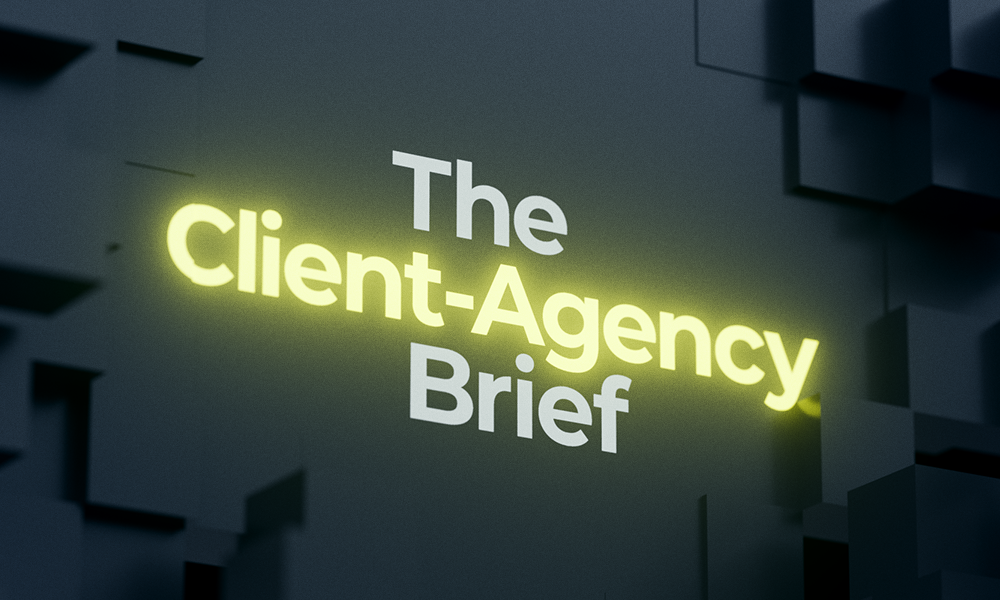The marketing brief is the cornerstone of effective communications campaigns, setting the stage for strategic development and marking the beginning of the client-agency relationship. However, writing a good one is easier said than done. A survey by Better Briefs found that only 6% of UK agencies are clear on the strategic direction in the briefs they receive from their clients, whilst UK marketers estimate that 26% of their marketing budget is wasted on poor briefs and misdirected work (Ritson & Better Briefs, 2022). Clearly, improving the quality of the marketing brief would benefit all. That’s why, in this article, we’ve outlined what we believe is the key to crafting a winning marketing brief.
The Importance of a Well-Defined Marketing Brief
Mark Ritson and Better Briefs (2022) put it beautifully: “In its simplest form, a good client brief defines what a brand wants an agency to do”. This important document serves as the foundation for an effective strategy by aligning expectations, establishing a shared understanding of the problem, and ensuring the agency being briefed is crystal clear on its aims.
What to Include in your Marketing Brief for Effective Campaigns
There are therefore four key things every marketing brief should always aim to do:
Identify the problem
A strategy is ultimately a way to solve a problem. Any marketer writing a brief for their creative agency must pinpoint the specific challenge their brand is facing – and believe marketing communications could overcome. This could be anything from low brand awareness to a declining market share. Clearly articulating the key issue to address, provides a laser focus for the agency’s strategic thinking, ultimately sharpening the quality of their output. The more focused the problem, the more effective the solution.
Set clear marketing objectives
Articulating your objectives is crucial for marketing effectiveness. Binet and Field’s (2007) research demonstrates that campaigns with clear objectives have a higher effectiveness success rate than those that don’t. To maximise impact, ensure your objectives are always SMART: Specific, Measurable, Achievable, Relevant, and Time-bound. For instance, rather than simply aiming to “increase sales”, a SMART objective might be “to increase product X sales by 15% among millennials in the UK within six months of campaign launch”. Precise objectives not only give clear direction to the strategic process but also provide concrete benchmarks for measuring campaign success. By setting SMART objectives, you create a roadmap for effectiveness, allowing for more focused strategy development and easier evaluation of campaign performance.
Be clear about your budget
A well-crafted brief should always include a clear indication of the available marketing budget. Knowing the financial parameters from the outset allows agencies to tailor their strategic and creative approaches appropriately, avoiding any time wasted on unfeasible ideas. It also fosters trust and enables more realistic goal-setting. By aligning expectations early, both the client and agency can focus on developing the most impactful solutions within the given resources.
Welcome collaboration
Don’t simply email a briefing document to your agency and hope for the best. Include them in the process from the start. Brief them verbally so they can ask questions in real time. Collaborate to find the best working methods for both parties. Treat your agency as an extension of your team, fostering open communication and mutual trust. Doing this will help your agency better understand your needs, ensuring they don’t miss the mark when they come back with their response.
Addressing these elements ensures the marketing brief “focuses minds and resources on the tasks that matter” (Binet & Field, 2007). In turn, this enables agencies to channel their creativity and strategic thinking in the right direction, ultimately resulting in more effective campaigns.
Case Study: Co-Creating a Marketing Brief Template to Improve Effectiveness
At Golley Slater, we put these principles into practice through collaborative approaches with our clients. A prime example is our work with Transport for Wales. Together, we’ve co-created a marketing brief template that works for both of us. The template is user-friendly for TfW to fill in and provides us with all the information we need to effectively answer their brief. It’s a time-saving tool for both brand and agency, constantly evolving and improving with each use. This collaborative approach has streamlined our responses to brief, significantly reducing miscommunication and helping us get to the right answer faster. As a result, we now have a more efficient process that leads to more effective campaigns.
When crafting your next marketing brief, make sure you:
- Clearly define the business problem to be solved
- Set SMART objectives so the agency knows what success will look like
- Be transparent about your budget
- Involve your agency early and often in the process
- Foster a collaborative relationship with open communication
Starting with a good marketing brief sets the stage for success, but that’s just the beginning. To develop a robust communications strategy, agencies answering the brief must figure out how to achieve their objectives. The marketing brief sets out the aim, but it doesn’t provide the solution. Stay tuned for future Effectiveness Insider issues where we’ll explore different ways to unlock the full potential of a marketing brief.
References
Binet, L., & Field, P. (2007). Marketing in the Era of Accountability. World Advertising Research Center.
Ritson, M., & BetterBriefs (2022). The best way for a client to brief an agency. IPA.

